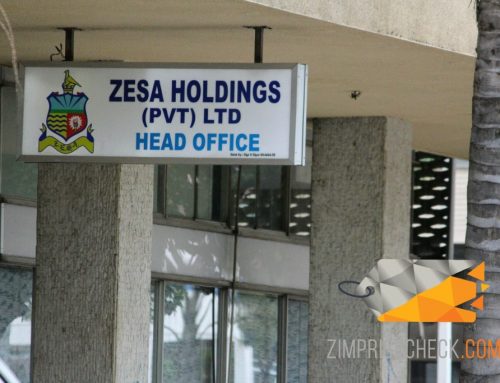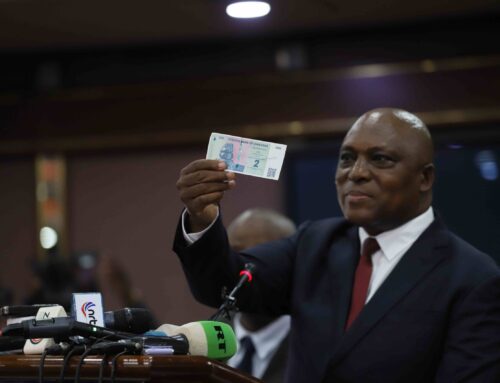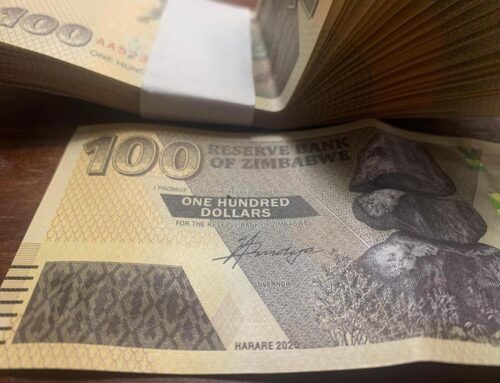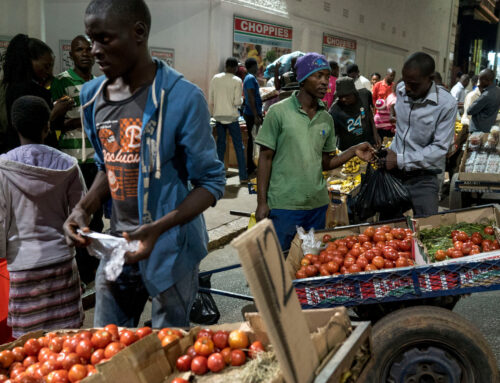TLDR
This is a long article that gives a thorough and comprehensive explanation of the current Zimbabwean pricing system. If you would rather not be educated here are the key takeaways from it:
- All products in Zimbabwe have three prices
- The lowest price in bond notes
- The middle price in bond coins usually around 10% more than the bond note price
- The RTGS/Ecocash price based on electronic funds (does not apply to international Visa/MasterCard transactions)
- All prices are based on USD era prices. Usually, the lowest price an item was going for in USD is used as the base
- For most businesses, this price is multiplied by the current black market rate
- For official businesses, USD prices are multiplied using the official rates. Even the government does this.
- Before 24 June 2019 businesses explicitly and transparently did this. Now they just do it in secret and effect price changes.
How it all works, in the beginning, was the USD
So my sister recently visited Zimbabwe and had to contend with our complex pricing system. She couldn’t comprehend how each item in most neighbourhood shops had at least three prices all in Zimbabwe dollars. How can there be three Zimbabwean dollars?
The Zimbabwean dollar trinity
Just like with the Catholic God, the Zimbabwean dollar is a trinity: it has three incarnations:
- RTGS dollars
- Bond notes
- Bond coins
The Zimbabwean government will have you believe all three are equal and one- that they all constitute the Zimbabwean Dollar. Nothing can be further from the truth.
Each member of the trinity explained
RTGS dollars derive their name from the Real Time Gross Settlement system which is used locally to make interbank transfers if account holders have accounts with different banks.
It also happens to be the same way civil servants, the largest group of employed people in Zimbabwe, get paid. The government in the person of the RBZ is in charge of this system.
When the government could no longer raise money (USD) to pay its massive wage bill they simply started sending magical numbers pulled out of thin air to their employee’s accounts. These employees could then withdraw real USD as their bank accounts said they had money.
However since the government never actually transferred any real money it meant the supply of actual physical real USD kept getting lower and lower resulting in cash shortages as the real owners suddenly found themselves competing for their deposits with government employees who only deposited electronic money.
Thus the government “printed” money out of thin air and created the RTGS dollar. Out of air and electrons, they made them. They eventually named them RTGS$ in February 2019; people had been calling them that based on their origin for years.
Perhaps anticipating the cash crisis that would result from the rapidly multiplying RTGS dollars the government introduced bond coins. These coins were supposed to solve the change problem.
The change problem and the bond coin
So let us back up and explain the change problem a bit here. You see when Zimbabwe adopted the multi-currency system in February of 2009 the USD and the Rand quickly dominated the local economy with the USD taking the crown in most parts of the country.
However, there was a problem. USD currency within Zimbabwe consisted almost exclusively of the USD notes and very few coins. In the early days, this was not so difficult to solve. The Rand and the USD traded at a steady rate of around R10 as to $1USD. Zimbabweans quickly solved this by simply dishing out change in Rand equivalent whenever coins were needed.
So if you bought a $0.50 cake slice using a $10 note you would be given $9 change in notes and R5 on top of that. Simple right. That changed when the Rand went on a sustained slump against the USD creating arbitrage opportunities that eventually saw people refusing change in Rand.
Change was now dished out in sweets (candy) at the point of sale. Other traders adopted a dollar for dollar-for-something strategy. This meant selling units in dollar calibrated bundles instead of selling single units. Oranges were now $1 for 10 for example instead of 10 cents each. The problem is that sometimes this is not ideal.
So in 2014 when the change problem was just dying out as people were now using more and more RTGS dollars the RBZ came up with the idea of the bond coin. These were supposed to be backed up by $50 million a facility from the African Export–Import Bank. This facility would be just like gold backing the currencies of the old world.
People were suspicious of these coins and initially refused them but were blunted into accepting them both metaphorically through the banking system and physically through riot police and actual thugs that went on a rampage at Mbare Musika as well as other places frequented by informal traders.
So the bond coin was born in the name of the Afrixemibank. It was meant to be Eve to the USD (Adam). It was the beginning of government deceit as no one really knows how many coins were minted.
Coins are heavy and with the continued increase in RTGS dollars and the accompanying USD disappearance, even the coins were not enough to solve the cash crisis. Thus the bond note was born.
The birth of the bond note
In 2016 the government waved its hand again and concocted the idea of a bond note to solve the biting cash crisis as the USD was now virtually gone chased away by the belligerent RTGS.
Again this was backed by a mysterious Afreximbank facility to the tune of $200 million USD. The government was simply now printing its own money and claiming whatever they had printed was at par with the USD although they were forced to admit that the bond notes could not be used outside Zimbabwe nor could they be traded internationally. Allowing either of these things would have exposed their 1:1 with-the-USD fairy tale.
Again people were wise to the scheming and pointed out this naked idea. So just as Adam and Eve dressed themselves in leaf apparels the government decided to dress bond notes as different by restricting themselves to $2 and $5 denominations.
The inflation train-wreck
Zimbabwe didn’t really recover from the disaster of 2008. With the Government of National Unity, things were looking up until Robert Mugabe tore it all up by introducing a company grabbing scheme called Indigestion. Things have only gone downhill from there.
The government printed $9 billion RTGS dollars as it went on an uninhibited spending spree. Meanwhile the economy was producing little and had to rely on imports. This $9 billion-plus was chasing the ever-dwindling USD pile.
The black market rate started rising, by early last year, it had doubled. Cash shortages even for the bond still persisted, they still do. Due to the inconveniences of using RTGS to buy and sell goods cash now started selling at a premium. First, that was 5% so $100 bond notes were worth $105 in RTGS (money in bank accounts). That rate steadily rose as cash shortages became acute. Today it stands around 40% for bond notes.
In 2019 the New Finance Minister added fuel to fire when he ordered banks to separate actual USD accounts from RTGS accounts. The market saw it for what it was, the government was admitting RTGS/Bond and USD were not equal. The value of the local currencies against the US dollar went on a slide.
The not so equal siblings
As has already been said, at some point it became clear the bond notes/coins were much easier to transact with due to the difficulties in using RTGS dollars to transact. To accept RTGS one needed a swipe machine and these are expensive. Few traders had them and one had to rely on the far and distant supermarket chains.
Ecocash made things a little easier. Initially born as a way to send money using mobile phones: Ecocash has a mobile wallet into which users could cash in physical cash send it to another number whose holder could cash out. With the cash crisis, it became impossible to cash out so people stopped cashing in.
Instead of dying Ecocash evolved and became a de facto currency in its own right. This fact was reinforced when Ecocash linked with banks in a way that allowed people to do wallet to bank and bank to wallet transactions. Traders with Ecocash could now sell in Ecocash, when they wanted to restock they would simply transfer funds to their bank accounts and pay wholesalers/suppliers using swipe.
However, Ecocash has some pretty steep fees that you have to pay during each transaction. This means an item selling for $3 and has a profit margin of $0.20 could see a seller making a loss if sold for RTGS or Ecocash due to these fees. Sellers simply started asking for more if one was paying using Ecocash/ Swipe when compared to cash.
Remember, US dollars were still allowed never mind the Rand. This was the birth of triple pricing:
- The original USD price which rarely if ever changed and was used as the base
- The bond note/ coin price at least for now the two were equal
- The Ecocash/RTGS price again Ecocash and RTGS were still equal
The rebirth of the Zimdollar
Things were like this when the RBZ reintroduced the RTGS dollar in February of 2019. Instead of wiping the slate clean with a new physical currency, they opted for continuity. Confusingly the RTGS dollar was supposed to be made up of:
- Bond notes
- Bond coins
- Bank balances (RTGS) which also includes Ecocash wallet balances (Ecocash)
This was merely a continuation of what the Finance Minister had done the previous year when he ordered the real USD and RTGS accounts to be separated.
The newly created RTGS dollar went on a free fall. Fuel prices were increased the official rate which started at around $2.5 RTGS for each US dollar steadily rose even though the RBZ stifled its rise.
The unrestrained black market rate went on a rampage. By June 24 it had risen to close to $13 RTGS for each USD. With disparities between the RTGS and the Bond Notes getting wider the bond was trading at around $9 for each USD.
As prices rose to carry and counting coins became inconvenient. Those trading in large volumes started shunning them. The fraternal bond twins, coins and notes, grew apart and the gap widened. Today it stands at 10%. $100 bond notes are worth $110 in coins.
Late last year (2018) the Minister of Finance introduced another measure than only emphasised the difference between RTGS balances/Ecocash and bond notes and coins (cash). He hiked the transaction tax levied on each transaction from 5cents to 2%. Further upending the market which saw another series of price hikes which naturally were an amplification of the 2% tax’s effect. Prices doubled over this tax.
Like the proverbial bolt from the blue, the Finance Minister and the President bypassed parliament on 24 June and issued Statutory Instrument 142 of 2019. This renamed the RTGS dollar and christened it the Zimbabwean dollar (ZWL). According to government fiction the RTGS balances, bond notes and coins are all equal.
The reality, for reasons outlined above, is however different. The law also banned the use of foreign currencies in Zimbabwe or that was its effect anyway. This left us with triple pricing:
The three main prices
- The lowest price is the price in bond notes
- Followed by a 10% or similar premium when coins are used
- The highest price is in RTGS/Ecocash which can be 50% higher
To make all things complicated you have to know that all prices are based on that USD base we talked of above. With a lot of items being imported people needed a way to guard their savings and businesses against inflation.
Most people simply adopt their lowest USD era prices and multiply that by the week/day’s black market exchange rate. Official large businesses use the official exchange rate to make computations. Even the government does this even when they duplicitously claim it is illegal to do the same. Fuel prices are computed this way.
The Afriximex Mystery lives on
Both bond notes and coins were backed by real USD or so we were told. What happened to those facilities, in the end, is not known- it is one of the country’s many enduring mysteries. It’s certainly not the only mystery by any means.
There is the mystery of just how many RTGS dollars we have and where they come/came from. Even the RBZ governor professed ignorance when quizzed about RTGS specifics and their origin. I don’t know,he said. It sums up the mess that is the Zimbabwean Economy.
No one knows anything when it all comes down to it, least of all the authorities.








Leave A Comment